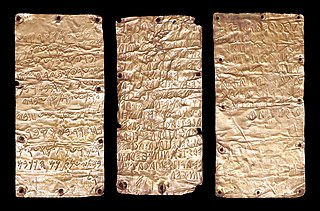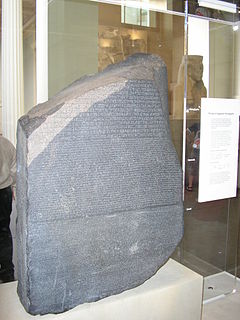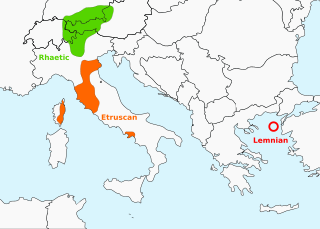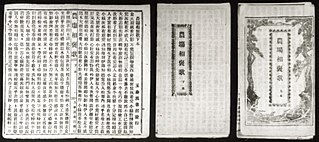This article includes a list of references, but its sources remain unclear because it has insufficient inline citations .(June 2014) (Learn how and when to remove this template message) |
The combinatorial method is a method of linguistic analysis that is used to study texts which are written in an unknown language, and to study the language itself, where the unknown language has no obvious or proven well-understood close relatives, and where there are few bilingual texts which might otherwise have been used to help understand the language. It consists of three distinct analyses:
Contents
- Archaeological-antiquarian analysis
- Formal-structural analysis
- Content and context analysis
- References
- archaeological and antiquarian analysis,
- formal-structural analysis, and
- content and context analysis.
Structural linguistics is an approach to linguistics originating from the work of Swiss linguist Ferdinand de Saussure and is part of the overall approach of structuralism. Structural linguistics involves collecting a corpus of utterances and then attempting to classify all of the elements of the corpus at their different linguistic levels: the phonemes, morphemes, lexical categories, noun phrases, verb phrases, and sentence types.

Content analysis is a research method for studying documents and communication artifacts, which might be texts of various formats, pictures, audio or video. Social scientists use content analysis to examine patterns in communication in a replicable and systematic manner. One of the key advantages of using content analysis to analyse social phenomena is its non-invasive nature, in contrast to simulating social experiences or collecting survey answers.
The method relies principally on information that is available in and about the language being studied, and has most famously been used for study of the Etruscan language. It has also been used for other languages, for example by Yves Duhoux (1982) for Eteocretan. The method was first advocated by Wilhelm Deeke in his 1875 refutation of Wilhelm Corssen's attempt to demonstrate a supposed relationship between Etruscan and the Indo-European languages by the etymological method, which is based on perceived resemblances between words in the text in the unknown language and words existing in known languages.

The Etruscan language was the spoken and written language of the Etruscan civilization, in Italy, in the ancient region of Etruria and in parts of Corsica, Emilia-Romagna, Veneto, Lombardy and Campania. Etruscan influenced Latin, but was eventually completely superseded by it. The Etruscans left around 13,000 inscriptions which have been found so far, only a small minority of which are of significant length; some bilingual inscriptions with texts also in Latin, Greek, or Phoenician; and a few dozen loanwords, such as the name Roma, but Etruscan's influence was significant. Attested from 700 BC to AD 50, the relation of Etruscan to other languages has been a source of long-running speculation and study, with its being referred to at times as an isolate, one of the Tyrsenian languages, and a number of other less well-known possibilities.

The Indo-European languages are a language family of several hundred related languages and dialects.
The combinatorial method was developed to replace the etymological method because the latter bases itself on circular reasoning, in which the assumed relationship purportedly proves the interpretation of the text and vice versa, thus being inadequate for scientific study or proof. While mainstream specialists in Etruscology have long since abandoned the etymological method in favour of the slow, rigorous work of the combinatorial method, the etymological method is still popular with amateurs wishing to prove a relationship between ancient texts and an existing language.
Circular reasoning is a logical fallacy in which the reasoner begins with what they are trying to end with. The components of a circular argument are often logically valid because if the premises are true, the conclusion must be true. Circular reasoning is not a formal logical fallacy but a pragmatic defect in an argument whereby the premises are just as much in need of proof or evidence as the conclusion, and as a consequence the argument fails to persuade. Other ways to express this are that there is no reason to accept the premises unless one already believes the conclusion, or that the premises provide no independent ground or evidence for the conclusion. Begging the question is closely related to circular reasoning, and in modern usage the two generally refer to the same thing.
Etruscology is the study of the ancient civilization of the Etruscans in Italy, which was incorporated into an expanding Roman Empire during the period of Rome's Middle Republic. Since the Etruscans were politically and culturally influential in pre-Republican Rome, many Etruscologists are also scholars of the history, archaeology, and culture of Rome.
Folk linguistics is the amateur study of linguistics. The term is often used as a pejorative.













